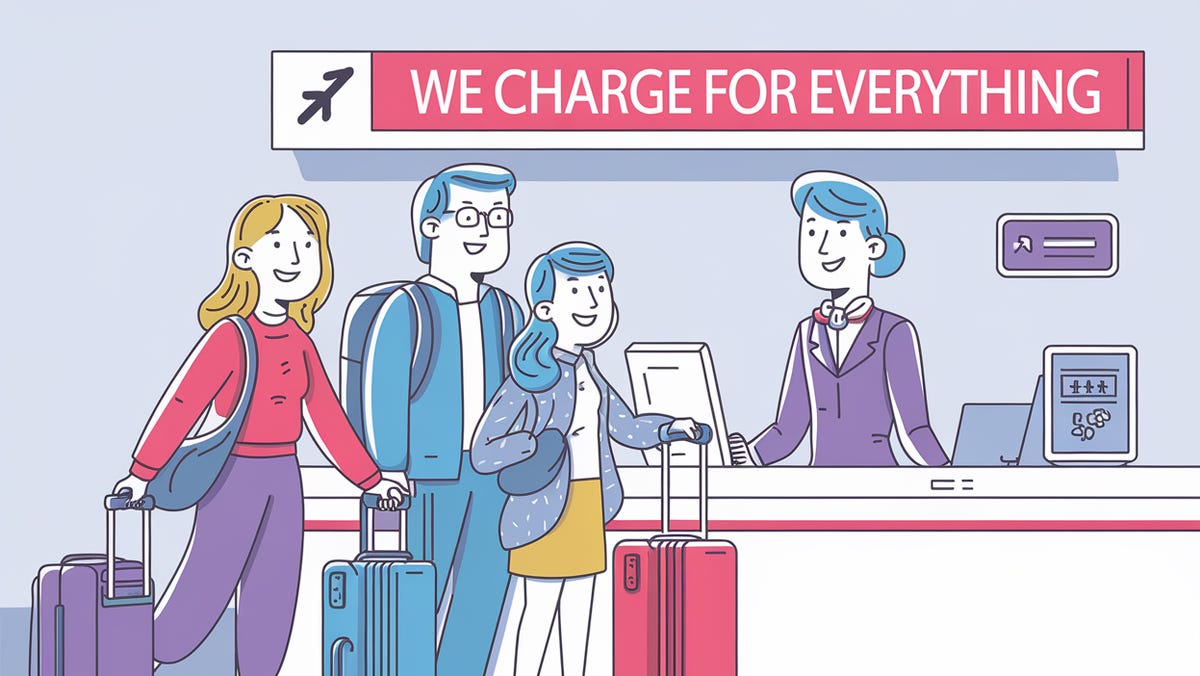A hotel fire alarm, a flat response and a hard truth about human CX.
The Gist
- Empathy on empty. When frontline staff lose connection to purpose, even a basic customer interaction can feel colder than AI.
- The human edge is slipping. Emotional intelligence was once our differentiator — but if empathy is absent, customers will prefer efficiency over humanity.
- AI is closing the gap. As chatbots learn tone and empathy simulation, the “human advantage” in service is shrinking fast.
- Be human on purpose. Empower staff, measure connection and build cultures where empathy isn’t scripted — it’s authentic.
At 3 a.m., I was jolted awake in my hotel room by the shrill, unrelenting scream of the fire alarm. You all know that sound. Manufacturers must program the fire alarms to only do this in the middle of the night, because that’s the only time it happens to me.
After a few minutes, it became clear this wasn’t just a glitch. I called the front desk to see what was going on and ask about getting a new room so I could salvage some sleep.
What I got was worse than the alarm.
The staff member answered like I was interrupting them; flat, cold and inconvenienced. No apology. No concern. Just this: I’d have to wait 45 minutes for a new room because their system was undergoing a nightly update. I asked to be called when it was back online.
They never called.
Eventually, exhausted and still enduring the constant beeping, I packed up and went to the front desk myself. The system was live. But when I asked why they didn’t call, I was told they were doing “paperwork.” Again – no empathy. No apology. Just indifference.
And the irony? I was in town for a CX conference.
Yes, at their hotel to speak about designing better customer experience, while simultaneously experiencing one of the worst.
You can’t make this stuff up.
The Customer Service Catch‑22
This is the paradox customer service is facing today:
- On one hand, service leaders are concerned AI will replace frontline roles. In many cases it already is.
- On the other hand, they argue that only humans can deliver real empathy and connection. That’s our edge. Our insurance policy.
But if the human experience is cold, indifferent and transactional… then what, exactly, are we protecting?
If AI can simulate empathy better than most humans can express it, the rationale for keeping humans in the loop starts to fade.
The scary thing? In that lobby, half-asleep and irritated, I would have preferred a well-trained chatbot. At least it would’ve apologized, scripted or not.
The Disappearing Differentiator With AI and CX
For the last decade, the human edge in service was supposed to be emotional intelligence. We were told: AI can automate tasks, but it can’t care. Humans can connect.
But real-world service interactions are proving otherwise. The caring is missing. Not everywhere, but often enough that it’s become normal.
A recent Verizon study found that 88% of customers are satisfied when they interact with humans, but 60% say that when the interaction is AI-only.
That’s a 28-point gap but closing.
Here's the catch: that human advantage only exists when humans act like humans.
When empathy is missing, customers don’t prefer people. They prefer progress.
If AI is faster, smoother and just as emotionally flat as a burned-out staffer, then why not use AI?
Related Article: AI and Human Teams: Smarter Contact Centers and Better Customer Service
The Human vs. AI Service Divide
This table captures the core contrasts between AI capabilities and human service performance — and what it takes to restore the human edge.
| Dimension | AI Strength | Human Opportunity | Action for CX Leaders | |-----------|-------------|-------------------|-----------------------| | Empathy Expression | Can simulate tone, apology and concern through trained language models. | Can feel and act with genuine care and emotional intelligence. | Retrain teams for presence and active listening, not scripts. | | Consistency | Delivers uniform responses 24/7 with no burnout. | Inconsistent when staff are stressed or disconnected from purpose. | Foster emotional resilience and align incentives with empathy. | | Speed & Availability | Instant, scalable, and efficient across channels. | Limited by system constraints and workload fatigue. | Redesign workflows and remove barriers to human help. | | Emotional Connection | Simulated through phrasing, but lacks authenticity. | Authentic when employees are empowered and aligned with mission. | Build purpose-driven cultures where empathy is natural, not forced. | | Customer Trust | Improving as customers value speed and efficiency. | Still higher when service feels personal and caring. | Measure “connection” metrics, not just resolution rates. |
The Data Is Clear
Let’s be honest: most consumers still want to talk to people if those people are capable and emotionally intelligent; most consumers still prefer speaking with a human over AI, when given the choice.
The desire for human connection is still strong. But the delivery of that connection is what’s slipping.
That’s the problem.
Where Human Service Falls Apart
It’s not that frontline employees don’t care. It’s that they’re often set up to fail.
- They’re trained in policies, not in presence.
- Measured on speed, not sincerity.
- Given tools but not trust.
- Asked to resolve issues but not empowered to solve problems.
They’re exhausted, underappreciated and disconnected from the broader purpose of the brand. And in many cases, they’re forced to operate inside systems that prioritize compliance over compassion.
The result?
You get service like mine. A human face but no human connection.
Related Article: Your Contact Center Agents Don't Fear AI—They Fear Your Leadership
Can AI Actually Do Empathy Better?
Not really. But it can do enough to make people feel heard.
AI is getting very good at tone detection, language matching and empathetic phrasing. Tools like ChatGPT, Google Bard and others can simulate concern in ways that feel surprisingly natural.
But they don’t feel. They don’t care.
They’re just better at sounding like they do.
And when that’s more than you’re getting from the person behind the desk or on the phone? That’s a problem.
The Way Forward: Be the Human AI Can’t Be
If human service is to survive, and more importantly to matter, we need to treat it like the asset it is.
Human agents should be positioned not as cost centers, but as experience differentiators.
To do that, organizations must:
- Empower discretion – Let employees make judgment calls and act on behalf of the customer, not just within policy scripts.
- Measure connection, not just resolution – Track emotional resonance, not just ticket closure.
- Redesign systems for flow – Make it easier for people to help people. Remove internal friction. Connect tools, data and authority.
- Build a culture of purpose – When employees believe in the mission, they deliver differently. When they’re aligned, empathy becomes natural.
Because being human isn’t enough. Being human on purpose is.
The Job Is Ours to Lose: Customer Experience at a Crossroads
AI will keep getting better. It will eventually sound just like us. It may even outperform us in areas like recall, speed and scripted empathy.
But it will never care.
It will never get frustrated for the right reasons. Never lean in with urgency. Never lose sleep over doing what’s right.
We still have the edge. But only if we act like it.
If human service wants to stay in the game, it must show up with heart, presence and action.
Because if human experience becomes a worse version of automation, then automation wins.







Comments
Join Our Community
Sign up to share your thoughts, engage with others, and become part of our growing community.
No comments yet
Be the first to share your thoughts and start the conversation!